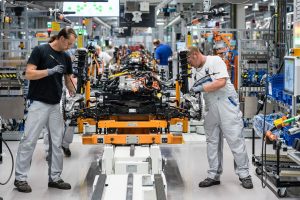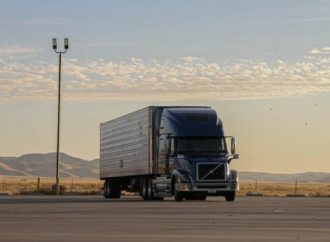Introduction Automaker Ford is making headlines with a bold move to invest heavily in electric vehicle production. As governments and consumers push for cleaner transportation, Ford’s commitment marks a turning point in its century-old history. By building new factories, upgrading supply chains, and training workers, the company aims to meet growing demand for electric trucks,
Introduction
Automaker Ford is making headlines with a bold move to invest heavily in electric vehicle production. As governments and consumers push for cleaner transportation, Ford’s commitment marks a turning point in its century-old history. By building new factories, upgrading supply chains, and training workers, the company aims to meet growing demand for electric trucks, SUVs, and cars. This article explores what Ford is planning, how it will affect the auto industry, and why this investment matters for our planet’s future.
The Rationale Behind Ford’s Investment
Ford’s decision to pour billions of dollars into electric vehicle production did not happen overnight. Rising concerns about climate change have led to stricter emissions rules around the world. At the same time, battery costs have fallen, making electric vehicles more affordable. Competitors like Tesla have shown that consumers will buy electric cars when the price, design, and performance match their expectations. To stay competitive and meet its own carbon-neutral targets by 2050, Ford must scale up its EV output now.
Another factor is consumer preference. Surveys show that many buyers, especially younger ones, want electric options. Early adopters of electric vehicles praise their quick acceleration, low maintenance, and potential cost savings on fuel. By expanding its EV lineup, Ford hopes to capture this growing market and avoid being left behind as other automakers pivot away from gasoline engines.
Key Elements of the Investment

Image by: Yandex.com
Ford’s investment plan covers several areas:
- New Factories and Upgrades: The company is converting existing plants and building new ones dedicated to electric vehicles. In the United States, Ford has committed over 11 billion dollars to three major sites in Michigan and Ohio. These factories will assemble batteries, electric motors, and final EV models.
- Battery Production: To secure a stable supply of batteries, Ford is partnering with leading cell makers. Joint ventures include a battery complex in Kentucky and another in Tennessee. These facilities will use advanced chemistry to boost range and lower costs.
- Supply Chain Expansion: Electric vehicles require different parts than traditional cars. Ford is working with suppliers to source critical materials like nickel and lithium responsibly. The goal is to set up regional supply chains that reduce shipping time, cut carbon emissions, and protect against trade disruptions.
- Workforce Training: Shifting from engines to electric motors means retraining thousands of workers. Ford’s investment also funds apprenticeship programs, technical schools, and on-the-job learning to ensure employees can build and service EVs safely and efficiently.
- Charging Infrastructure Support: Recognizing that charging stations are key to EV adoption, Ford is investing in partnerships to expand public charging networks. Grants and rebates will help communities install fast chargers, making long journeys easier for EV owners.
Transforming Manufacturing Plants
Ford’s Rouge Complex in Detroit is a prime example of its EV transformation. Once known for producing the iconic Model T, the Rouge now hosts electric F-150 Lightning production. The plant’s assembly lines have been retooled with robots and special jigs to handle battery packs. A new flexible space allows the same line to build both electric and traditional trucks as demand shifts.
In Ohio, the order of 7 billion dollars will turn a large legacy plant into a green manufacturing hub. The site will use solar panels, rainwater recycling, and waste heat recovery systems to lower its environmental footprint. Ford estimates these upgrades will cut the plant’s carbon emissions by half. The move shows how electric vehicle investment can go hand in hand with greener production practices.
Economic and Job Impacts
Such a large investment promises to boost local economies. Construction crews, engineers, and technicians will find work building and outfitting new EV facilities. Once operational, these plants will employ thousands more in manufacturing roles. In addition, suppliers of battery components, electronics, and charging equipment stand to gain new contracts and growth opportunities.
Communities near Ford’s EV sites can expect increased tax revenues and improved infrastructure. Local governments often partner with Ford on training centers and roads to support the plants. This “multiplier effect” helps revitalize regions that once relied on older auto plants facing closure.
Environmental Benefits
Switching to electric vehicle production is a major step toward reducing transportation emissions. Passenger cars and trucks account for about 25 percent of global carbon dioxide pollution. Electric vehicles produce zero tailpipe emissions, cutting urban air pollution and improving public health.
On a lifecycle basis, EVs powered by clean electricity can cut greenhouse gases by up to 70 percent compared to gasoline vehicles. Ford’s battery factories are designing systems to capture and reuse heat, further lowering the carbon footprint. As more renewable power enters the grid, EVs will become even greener over their lifetime.
Market Outlook and Consumer Response
Experts predict that electric vehicles will make up nearly half of all new car sales in the United States by 2030. Ford’s investment positions it to capture a significant share of that market. Early reviews of the F-150 Lightning, Mustang Mach-E, and upcoming electric Explorer have been positive, highlighting smooth acceleration, spacious interiors, and tech features like over-the-air software updates.
Pricing remains a concern for some buyers, but incentives and falling battery costs are narrowing the gap with gasoline cars. Ford has pledged to offer a range of EV models at different price points, including a more affordable compact crossover coming in 2025. By appealing to both mainstream and premium segments, Ford aims to broaden EV adoption across income levels.
Challenges and Risks
No major shift comes without hurdles. Electric vehicles still face challenges such as:
- Battery Supply Constraints
- Demand for lithium, nickel, and cobalt has surged. Ford’s long-term contracts help, but global shortages or geopolitical tensions could raise prices.
- Charging Accessibility
- While Ford invests in charging networks, rural areas and apartments still lack easy access. Government support and private investment must keep pace.
- Consumer Education
- Some drivers worry about range, charging time, and resale value. Clear information and test drive programs can build confidence.
- Technology Shifts
- Battery technology is evolving quickly. Ford must balance investing in current systems with staying ready to adopt next-generation cells.
By working with policymakers, utilities, and suppliers, Ford aims to address these issues. Public-private partnerships will be key to maintaining momentum.
Broader Industry Impact
Ford’s massive EV investment sends a clear message to the auto industry: electric is the future. Competing automakers have announced their own EV plans, leading to a wave of new models arriving each year. Suppliers are retooling factories, and tech companies are racing to provide better batteries, motors, and charging solutions.
This competition benefits consumers by driving down prices, improving performance, and expanding choice. At the same time, it accelerates the global transition away from fossil fuels. As more major automakers join the journey, the combined effect on emissions and air quality could be transformative.
Conclusion
Ford’s major investment in electric vehicle production marks a turning point for both the company and the auto industry. By building new factories, securing battery supply, and training workers, Ford is committing to a cleaner, more sustainable future. This shift will bring economic growth, create jobs, and reduce greenhouse gas emissions. While challenges remain—such as battery supply and charging access—Ford’s partnerships and public support will help drive progress. As consumers embrace electric vehicles for their performance and environmental benefits, Ford’s bold move will power the shift toward zero‐emission transportation.























Leave a Comment
Your email address will not be published. Required fields are marked with *